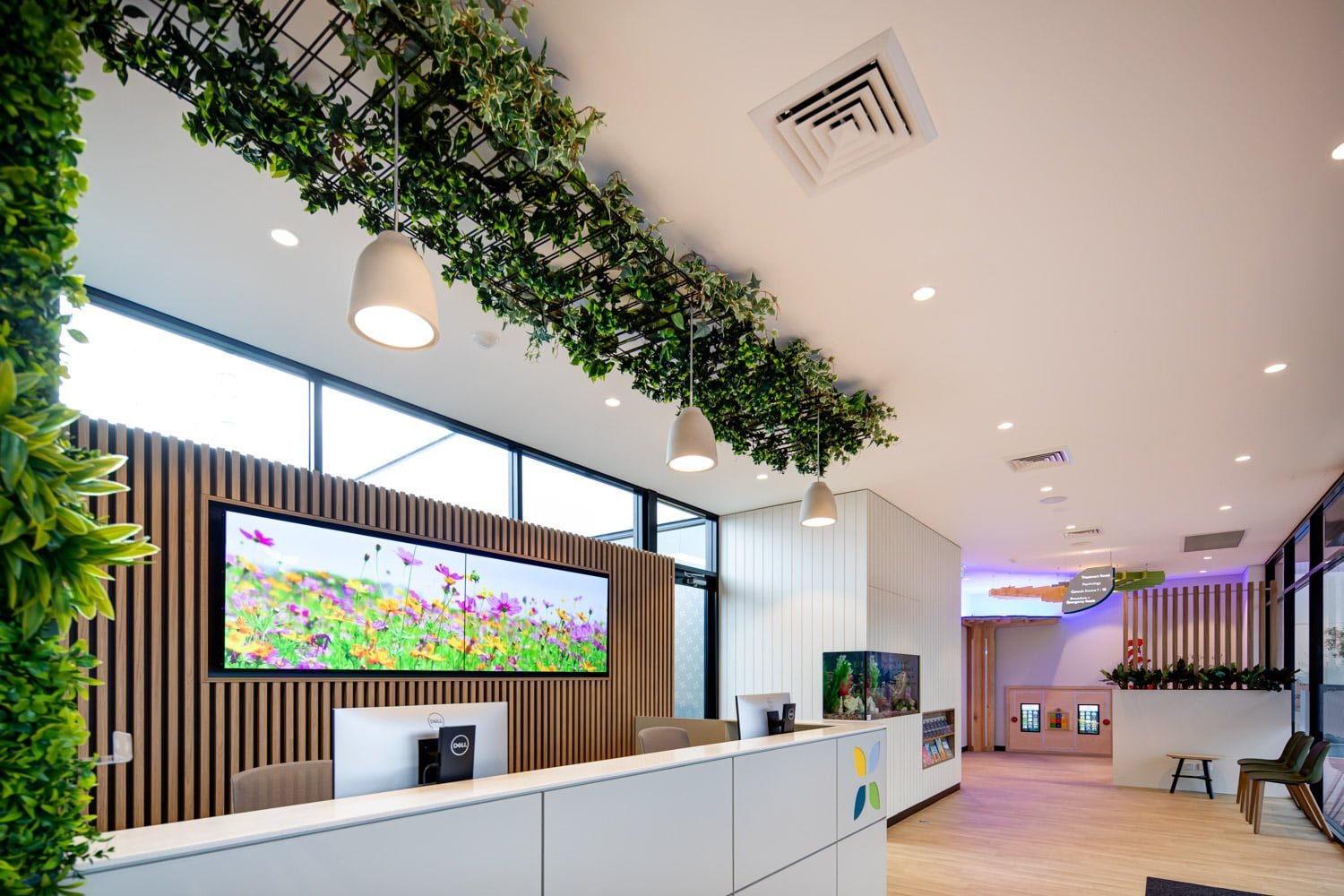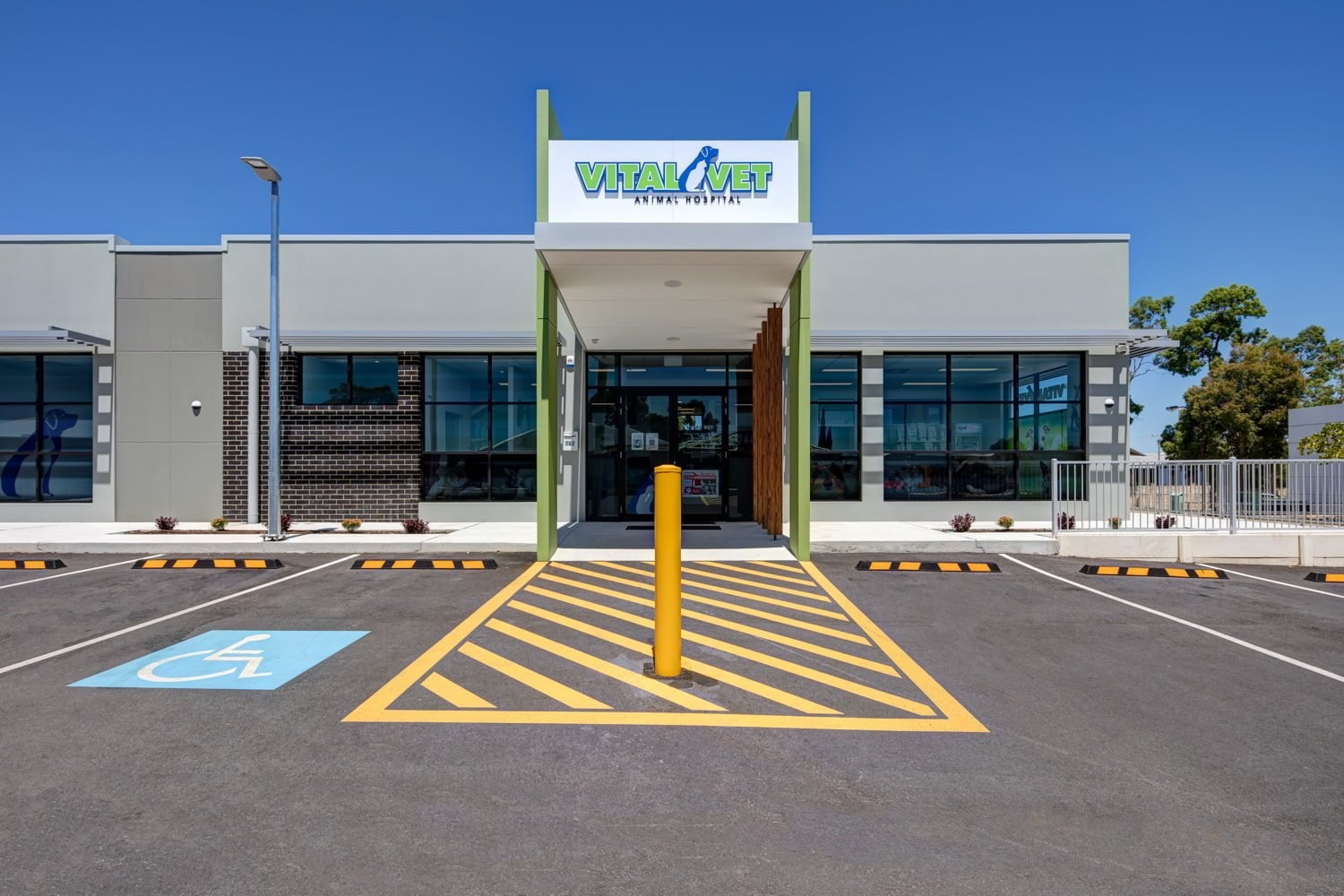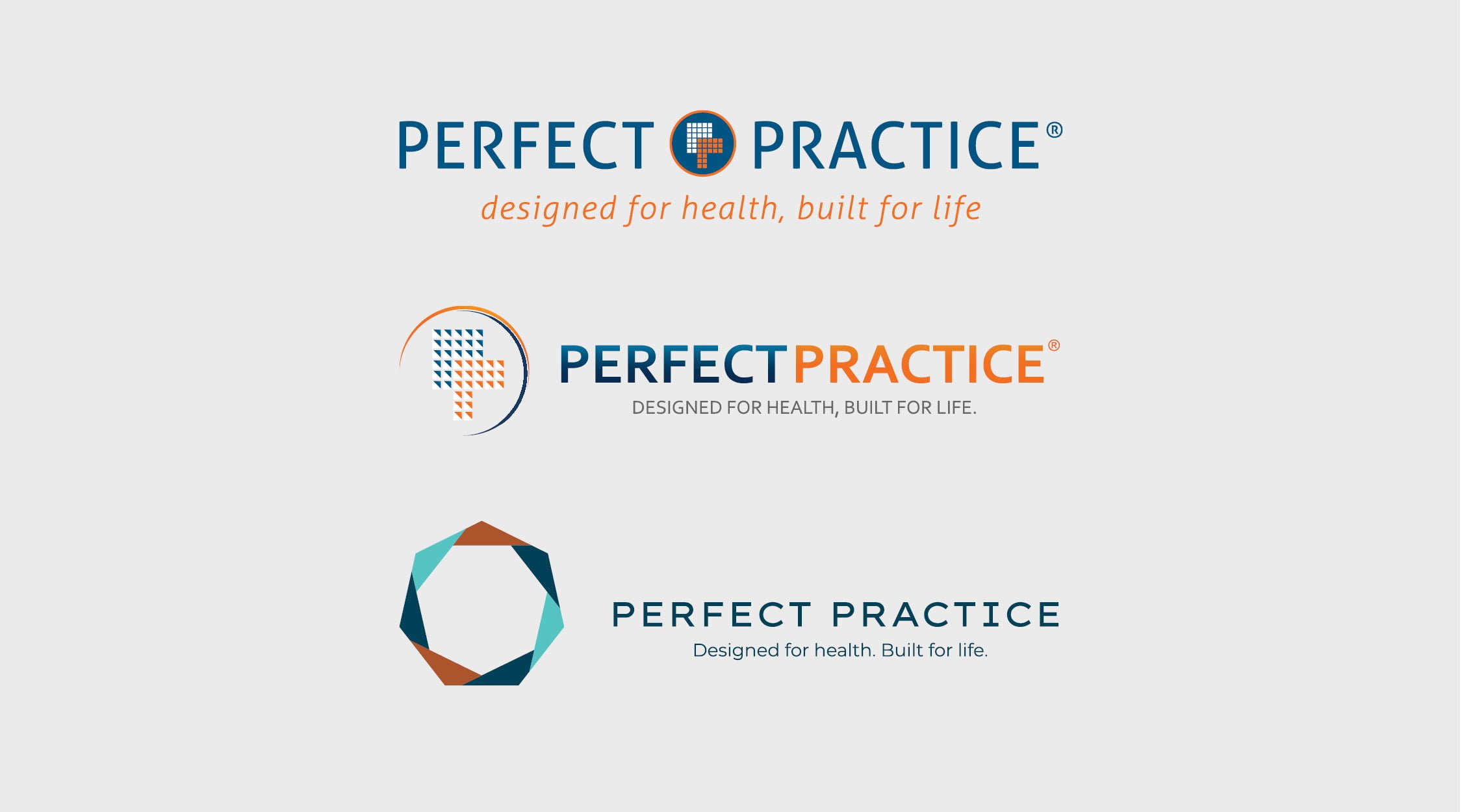Green design in healthcare encompasses the integration of sustainable principles and practices into the planning, construction, and operation of healthcare facilities. Not only does it prioritise environmental stewardship and resource efficiency, the fundamentals of green ethos considers occupant well-being. Together, they combine to create a holistically healing environment that minimise ecological impact.
With the healthcare industry constantly evolving, one of the latest trends is taking a holistic approach to clinic design. That is, strategically combining patient wellness with eco-friendliness to create a superior patient experience. This article provides an in-depth exploration of the importance of incorporating sustainable principles into healthcare facilities. The aim – to create spaces that balance functionality with environmental responsibility. By prioritising holistic healthcare practices and fitouts that go beyond traditional standards, healthcare professionals can develop a new generation of clinics that not only meet the needs of their patients but also contribute to a sustainable and green future.
The Benefits of Green Design in Healthcare
Integrating green design principles into healthcare clinics can bring a wide range of benefits that extend beyond the physical environment of a healthcare practice. The well-being of patients takes centre stage with several studies, including this study recently conducted by the Office of the Victorian Government Architect, showing a positive correlation between green environments and patient wellbeing. The satisfaction of healthcare staff is enhanced as green design fosters a workplace that prioritises not only the health of patients but also the well-being of those delivering care. Green Design not only has a human impact, but also generates tangible benefits such as energy savings and a reduced environmental footprint, aligning healthcare facilities with global efforts towards a greener and more sustainable future.
Regulatory Landscape for Sustainable Healthcare Design
Integrating green design into healthcare construction, design, and fitouts involves dealing with a complex regulatory landscape. Energy rating of electrical fittings, windows and insulation are a few of the aspects of a healthcare fitout that need to meet governing standards. By aligning fitout projects with these standards, healthcare professionals can contribute to a sustainable future while also ensuring that their clinics meet the highest industry benchmarks. Engaging a healthcare fitout specialist can provide added insight into frequently overlooked regulations, addressing them during the planning and design process. From a business perspective, an eco-friendly approach not only enhances the reputation of healthcare facilities but also positions them as leaders in responsible and sustainable healthcare design.
Sustainable Materials Selection
The selection of sustainable materials lies at the heart of green design, which is a crucial aspect of responsible healthcare fitouts. Wood, recycled fibres, and eco-friendly and biodegradable materials that are not only environmentally conscious but also durable and hygienic all add to a sustainable approach. The selection of materials – be it for flooring, cabinetry, surfaces and furniture – is an outward reflection of a commitment to patient health and environmental awareness. These elements also enhance the ambience of a clinic, with the ability to evoke the serenity of nature.
Energy-Efficient Lighting and Technology
The significance of lighting in healthcare settings goes beyond just practicality; it plays a crucial role in creating an inviting environment. Energy-efficient lighting solutions not only enhance the visual appeal of spaces but also contribute significantly to sustainable operations. By integrating innovative and sustainable technologies, your clinic gains a competitive edge. It is these healthcare clinics that develop a reputation as industry leaders amongst peers and, more importantly, your patients and local community.
Indoor Air Quality
In healthcare settings, the quality of overall patient care is of utmost importance. This makes a clean and fresh environment, including the air within clinic spaces, all the more important. By creatively incorporating biophilic elements such as indoor plant walls and pot plants throughout reception and waiting areas, practices have the opportunity to establish a connection with nature within the confines of a healthcare facility while also capitalising on natures’ natural air filters – plants.
The use of adequate air filtration technology can also assist with maintaining a consistent level of indoor air quality by effectively removing odours (relevant to spaces such as veterinary practices) and eliminating airborne bacteria, fostering a healthier environment for both patients and staff. While several types of air filtration equipment are available, High Efficiency Particulate Air (HEPA) filters are a prevalent choice within healthcare settings. HEPA filters are known to effectively capture microscopic particles, including bacteria and viruses
Waste Reduction and Recycling Initiatives
A commitment to sustainability extends to waste reduction and recycling initiatives during the fit-out process. Incorporating waste reduction and recycling stations in a healthcare fitout is a simple way to minimise waste generation and divert recyclable materials from landfills. During the construction and fitout stage, this can mean setting up designated recycling stations throughout the construction site to segregate recyclable materials like cardboard, glass, plastic, and metal. Post-fitout, a healthcare practice can also partner with local waste management companies that prioritise recycling and ensure proper disposal of construction waste. By adopting responsible waste management practices, healthcare clinics not only reduce their ecological footprint but also set an example for sustainable practices in the broader community.
Patient-Centric Sustainable Design
The integration of green design principles significantly contributes to patient-centric spaces, redefining the traditional healthcare environment. Natural light, greenery, and calming colour palettes inspired by nature are just some elements that place priority on the patient experience, fostering an environment conducive to patient comfort and well-being. On a practical design level, this can be seen through larger, north-oriented windows, indoor plants as previously mentioned, a naturalistic materiality and a considered palette of earthy browns, beiges, subtle greens and deep blues.
Cost-Effective Green Solutions
Contrary to common belief, incorporating green design does not necessarily equate to exorbitant costs. Rather, implementing eco-friendly finishes alongside sustainable practices, can lead to financial savings over time.
Cost-effective strategies for integrating sustainable practices, can often be implemented in the selection of fixtures and finishes. For example: selecting energy-efficient and long-lasting lighting such as LED lights, and installing low-flow faucets, toilets, and showerheads in wet areas are just some ways to leave a lighter footprint – without compromising performance. These green options provide healthcare practices with a way to reduce operational expenses related to utility bills and maintenance. Additionally, investing in durable and high-quality furnishings minimises the need for frequent replacements, decreasing lifecycle costs. Over time, these conscientious decisions not only lead to financial savings but also demonstrate a commitment to environmental responsibility and community well-being.
Partner with Perfect Practice – Leaders in Sustainable Healthcare Fitouts
The integration of green design in healthcare clinic fitouts is not merely a trend but a holistic approach to patient care. The benefits are multifaceted, ranging from enhanced patient well-being to reduced environmental impact. By adopting green design principles, healthcare clinics can position themselves as leaders in responsible and sustainable healthcare, setting a new standard for excellence and compassion.
As healthcare professionals embark on their journey toward sustainable clinic fitouts, Perfect Practice stands as a trusted industry partner. Recognised as leaders in sustainable healthcare fitouts, Perfect Practice combines unparalleled expertise with a steadfast commitment to excellence. Explore our portfolio of successful projects that exemplify the seamless integration of green design principles. Contact Perfect Practice today for a consultation, and step into a future where healthcare is naturally and environmentally conscious.







